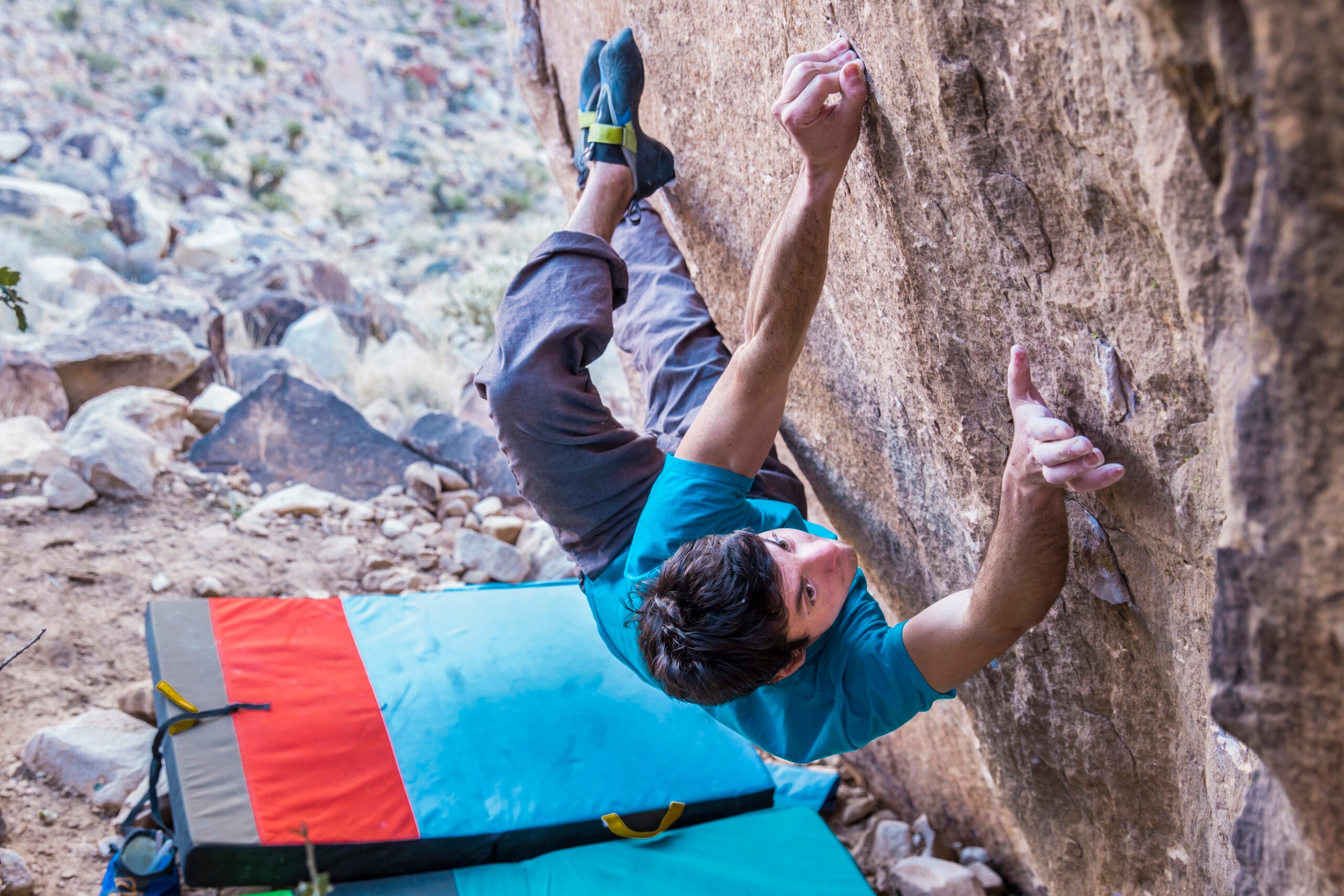4 Ways to Train Smarter in the Gym to Climb Harder Outside

(Photo: Alexandra Kahn / Getty Images)
You’ve all seen “that guy”—that gym-honed freak who blasts through campus ladders and sends the gym’s hardest problems only to turn into a puddle of flail on the rock. For some reason, he’s unable to apply his fierce fling-the-grips-at-the-ground style outside. So what’s going on? Two climbing coaches, Justen Sjong and Juan Usubillaga, both 5.14 climbers based in Colorado’s Front Range, offer their take on how we can all train on plastic smarter, and not just harder, to become better climbers both outside and in.
1. Slow It Down
The problem
It’s common to rush in the gym—you only have a couple hours, and that go-go-go attitude plays out while climbing. Also, the tape makes it easy to read beta on the fly and the power-endurancy routes almost require that you climb quickly. Yet taking this sprinting approach on rock boxes you in to hasty sequencing and bad beta. This is because the holds outside are subtle and must be grabbed slowly and with precision, or they play “hide and seek.”
The solution
Climb inside as if you were outside: Slow your pacing, soften your gaze, shake out, breathe, and take the time to grab the holds with subtlety even if you know exactly what that next crimp will be. “This also helps you build endurance,” says Usubillaga, “instead of just rushing through.” The next time you climb outside, slow, methodical pacing will become your default mode.
2. Relax and Climb from the Feet Up
The problem
In the gym, with its padded floors, cable draws, and lack of exposure, it’s easy to feel relaxed—to climb with flow and confidence, from your feet up. But outside, where the falls are bigger and the exposure more immediate, that all dissolves, and your climbing becomes hand-focused as you hunt frantically for the next grip, dragging your legs along for the ride.
The solution
“This is the main problem I see with climbers who go from the gym to outside,” says Usubillaga. “It comes down to a mental thing: ‘The foothold is not big enough!’ ‘The hold is going to break!’” To get past this anxiety, Usubillaga will drill footwork sensitivity on plastic, with the idea that you can then take that relaxed, foot-first approach outside. He’ll coach students to:
- Look at how much pressure you’re putting on a given foothold: Are you really weighting the hold or just tentatively putting your foot there? How much more pressure could you apply, to get weight off your arms?
- Now, evaluate all foot positions: smearing, edging, heel hooks, toe hooks, and so on. Without fail, the more pressure, the better.
[Learn Precision Footwork with Pro Climber Paige Claassen]
3. “I” Before “C”
The problem
In the gym, where the holds have good friction, it’s easy to go big, with powerful, dynamic moves—the grips practically bite into your skin. “I’ll see climbers coil with their legs, kick off their feet, spring, and latch a hold with a bent elbow”—the “C formation”—says Sjong. “There’s nothing wrong with that, but outside you’re moving to subtler holds that are more like features, and you need to have constant pressure through your feet and legs so you can grab them with precision.”
The solution
Climb like an I: straighter, in a plank-like formation, catching holds with your arms less cocked, which conserves power. “Balance between how much elbow engagement you’re going to recruit versus keeping your knees and toes engaged,” says Sjong. “Keep standing through your body.” He encourages climbers to examine whether they could keep their feet on, on a long move, and then try to do so. He’ll also have them build kinesthetic awareness of the I formation by holding plank—i.e., the top of a pushup, with the core engaged and butt low to form one long line from head to toe—on the floor, feeling where their hips are and how their toes drive power up through the body.
4. Training Don’ts
Slip n’ Slide
The most common footwork mistake Sjong sees is people placing their foot above a hold and letting it slide down before contacting the grip. Because gym walls are monolithic surfaces, you can get away with this. But outside where the bas-relief is flawed, it’s harder. “I’ll drill that your breath should be louder than your foot placement,” says Sjong. “Be mindful about connecting with a hold with your toe and really feeling it, settling gently onto the hold even if you could just slide down.”
Let ‘Er Rip
With big guns and a strong core, it’s no big deal if your feet come off—simply swing back into the wall and stick them on. However, this wastes energy and should be plan B. Usubillaga will have students consciously keep their feet on, on overhanging terrain, to build awareness, usually on climbs at their onsight level—just challenging enough that they must pay attention to every foot placement.
This article originally appeared in Climbing Magazine in 2017.